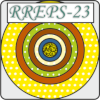Speaker
Description
The purpose of this work is to obtain a dynamic picture of the interaction of two solitons by analyzing the solution of the KdV (Korteweg de Wriz) equation. By changing the variables in the exact solution of the KdV equation, a solution is obtained that can be used to visualize the internal mechanism of the interaction of two solitons. At the corresponding boundary transitions in the transformed KdV equation, the limiting values of the corresponding functions describing solitons are calculated taking into account the phases. A numerical experiment shows that at t- there is no interaction of solitons, and the equation describes two solitons. The coordinates of the centers of solitons with small amplitude and large amplitude after interaction are determined.
Colliding solitons exchange amplitudes, a large amplitude gradually decreases, and a small one increases. An analogy of this phenomenon is the elastic collision of particles, with the only difference that the particles exchange momenta, and the solitons exchange amplitudes. However, in both cases, the exchanged parameters are related to power. Thus, the numerical experiment showed that during the interaction the solitons change places. After the collision, two solitons reappear with the same energies and amplitudes as before the collision. Only their phases change. As a result of the collision, the fast soliton receives an additional forward shift by a certain amount, while the slow soliton, on the contrary, shifts back by the amount calculated by us. The values of the corresponding phases are calculated.
Thus, the numerical experiment has shown that the interaction of solitons is indeed described by an analytical solution of the Kortev de Vries equation. When solitons collide, no nonlinear effects are observed. In the process of interaction, a soliton with a large amplitude is gradually compressed, transferring its amplitude to a smaller one. Then after the interaction we have the same two solitons as before the interaction (with the same amplitudes and widths), except that the larger amplitude soliton leads in the slip direction.
Then, using a numerical experiment, it is shown that the KdV solution obtained by the method of the inverse scattering problem describes the propagation and interaction of N solitons and that the interaction of N solitons does not differ in nature from the collision of two solitons.
The absence of secondary waves during the propagation of solitons indicates that the energy of the soliton is not scattered in space, but is localized in the region of space where the soliton is located. This is a property of particles. Taking into account the analogy of the interaction of solitons with the interaction of particles, we can say that solitons have a corpuscular nature. It is on the basis of these properties that researchers in fiber optics have proposed the use of nonlinear effects to compensate for wave dispersion and obtain short soliton pulses in optical communication fibers. Calculations show that this makes it possible to increase the performance of information transmission over optical cables by several times.
